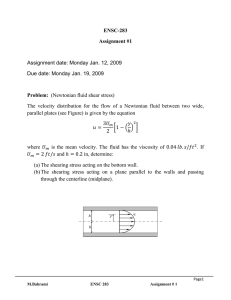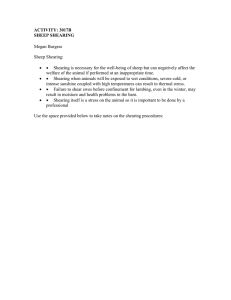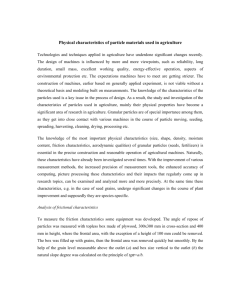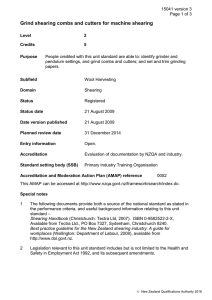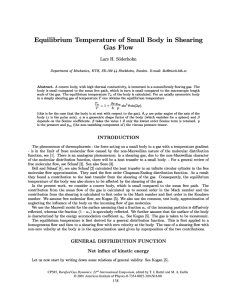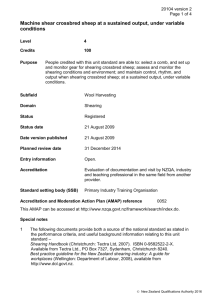Assignment1_solution
advertisement
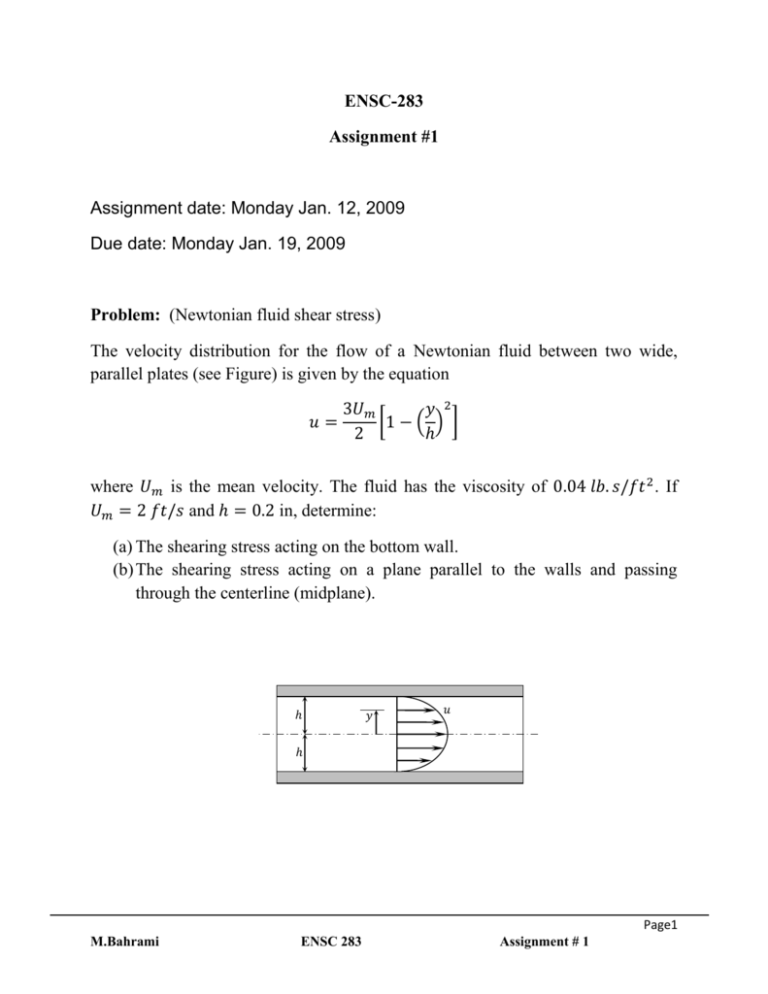
ENSC-283 Assignment #1 Assignment date: Monday Jan. 12, 2009 Due date: Monday Jan. 19, 2009 Problem: (Newtonian fluid shear stress) The velocity distribution for the flow of a Newtonian fluid between two wide, parallel plates (see Figure) is given by the equation 3𝑈𝑚 𝑦 2 𝑢= [1 − ( ) ] 2 ℎ where 𝑈𝑚 is the mean velocity. The fluid has the viscosity of 0.04 𝑙𝑏. 𝑠/𝑓𝑡 2 . If 𝑈𝑚 = 2 𝑓𝑡/𝑠 and ℎ = 0.2 in, determine: (a) The shearing stress acting on the bottom wall. (b) The shearing stress acting on a plane parallel to the walls and passing through the centerline (midplane). ℎ 𝑦 𝑢 ℎ Page1 M.Bahrami ENSC 283 Assignment # 1 Solution For this type of parallel flow the shearing stress is obtained from 𝜏=𝜇 𝑑𝑢 𝑑𝑦 (1) Thus, if the velocity distribution 𝑢 = 𝑢(𝑦) is known, the shearing stress can be determined at all points by evaluating the velocity gradient, 𝑑𝑢/𝑑𝑦. For the distribution given 𝑑𝑢 3𝑈𝑦 =− 2 𝑑𝑦 ℎ (2) (a) The bottom wall𝑦 = −ℎ so that 𝑑𝑢 3𝑈 = 𝑑𝑦 ℎ (3) And therefore the shearing stress is 𝑠 3𝑈 𝜏𝑏𝑜𝑡𝑡𝑜𝑚 𝑤𝑎𝑙𝑙 = 𝜇 ( ) = ℎ 𝑓𝑡 (0.04 𝑙𝑏. 2 )(3)(2 ) 𝑠 𝑓𝑡 𝑓𝑡 (0.2 𝑖𝑛.)(1 ) 12𝑖𝑛. = 14.4 𝑙𝑏/𝑓𝑡 2 (𝑖𝑛 𝑑𝑖𝑟𝑒𝑐𝑡𝑖𝑜𝑛 𝑜𝑓 𝑓𝑙𝑜𝑤) Always use units in your calculations This stress creates a drag on the wall. Since the velocity distribution is symmetrical, the shearing stress along the upper wall would have the same magnitude and direction. (b) Along the midplane where 𝑦 = 0 it follows from Eq. (2) that 𝑑𝑢 =0 𝑑𝑦 (4) Page2 M.Bahrami ENSC 283 Assignment # 1 And thus the shearing stress is 𝜏𝑚𝑖𝑑𝑝𝑙𝑎𝑛𝑒 = 0 Note (1): In this problem, we calculated the shearing stress acting on the walls. Same shearing stress but in the opposite direction is acting on the fluid. Why? Note (2): From Eq. (2) we see that the velocity gradient is a linear function of y i.e. 𝜏 = 𝛼𝑦 with 𝛼 = −3𝑈/ℎ2 . Hence, the shearing stress (see Eq. (1)) varies linearly with y and in this particular problem varies from 0 at the center of the channel to 14.4 𝑙𝑏/𝑓𝑡 2 at the walls. For the more general case, the actual variation will depend on the nature of the velocity distribution. 15 𝜏𝑤𝑎𝑙𝑙 = 14.4 𝑙𝑏. 𝑓𝑡 2 𝜏, 𝑙𝑏/𝑓𝑡 2 10 𝜏𝑚𝑖𝑑𝑝𝑙𝑎𝑛𝑒 = 0 5 0 -0.2 -0.1 0 0.1 0.2 y, in Page3 M.Bahrami ENSC 283 Assignment # 1
